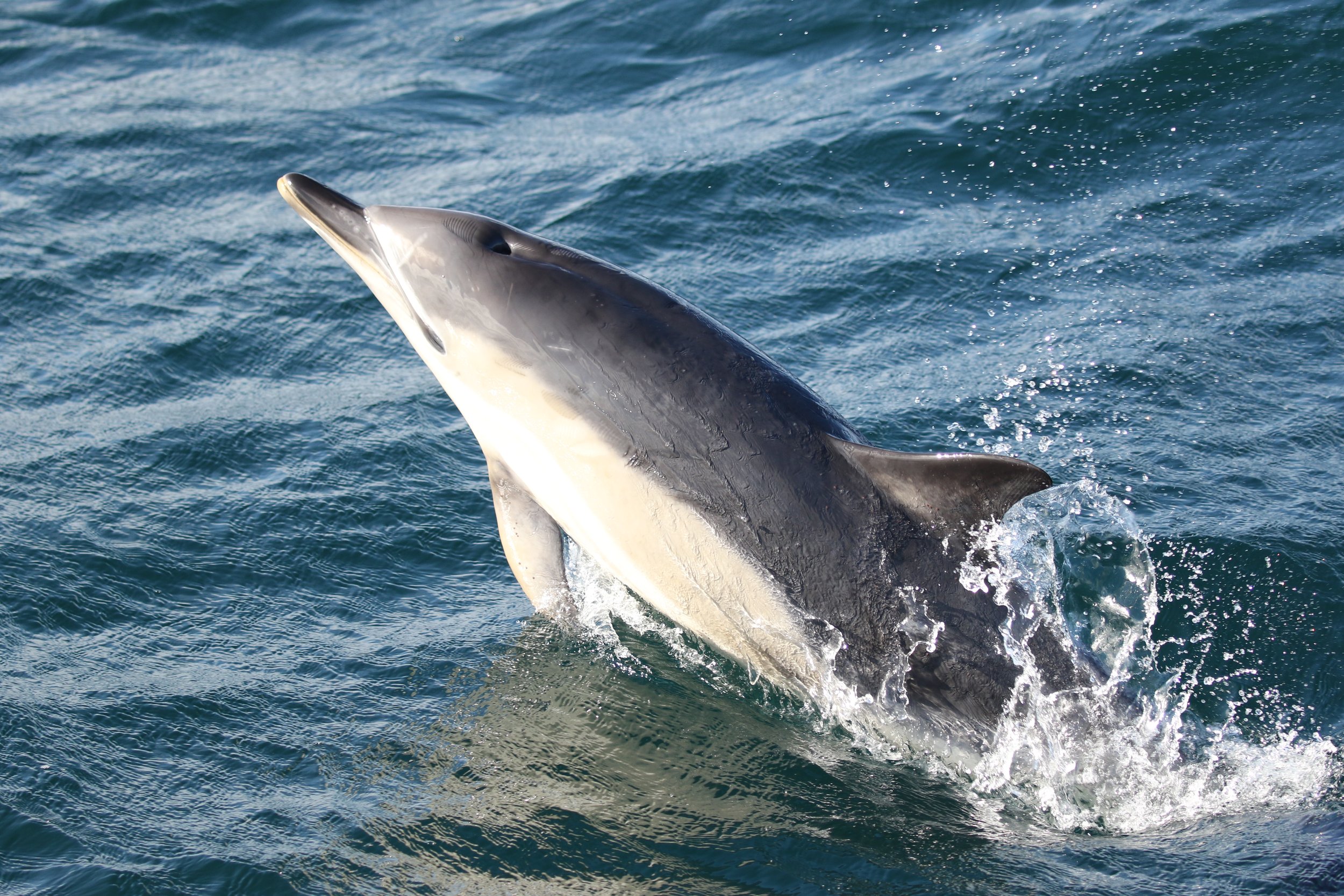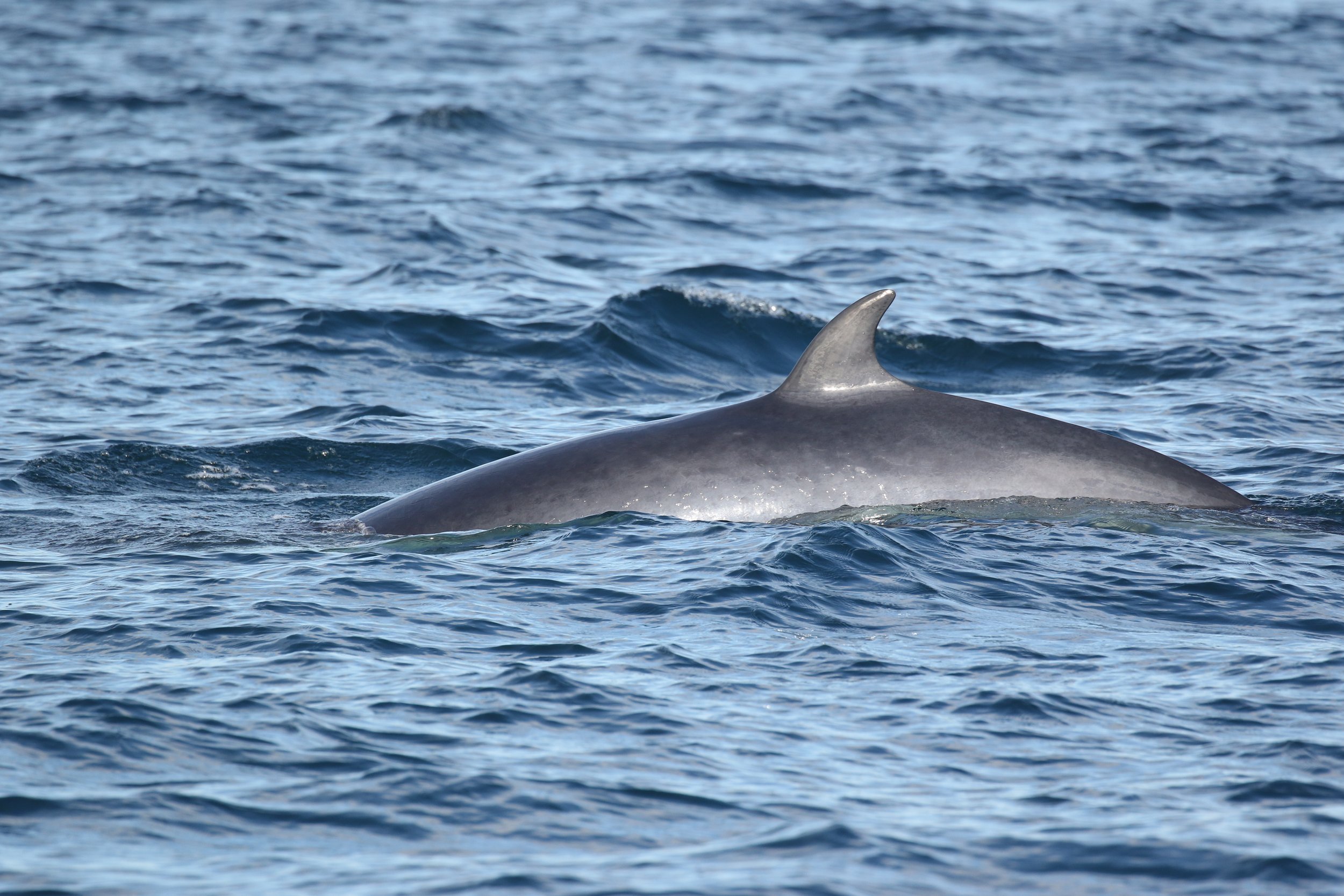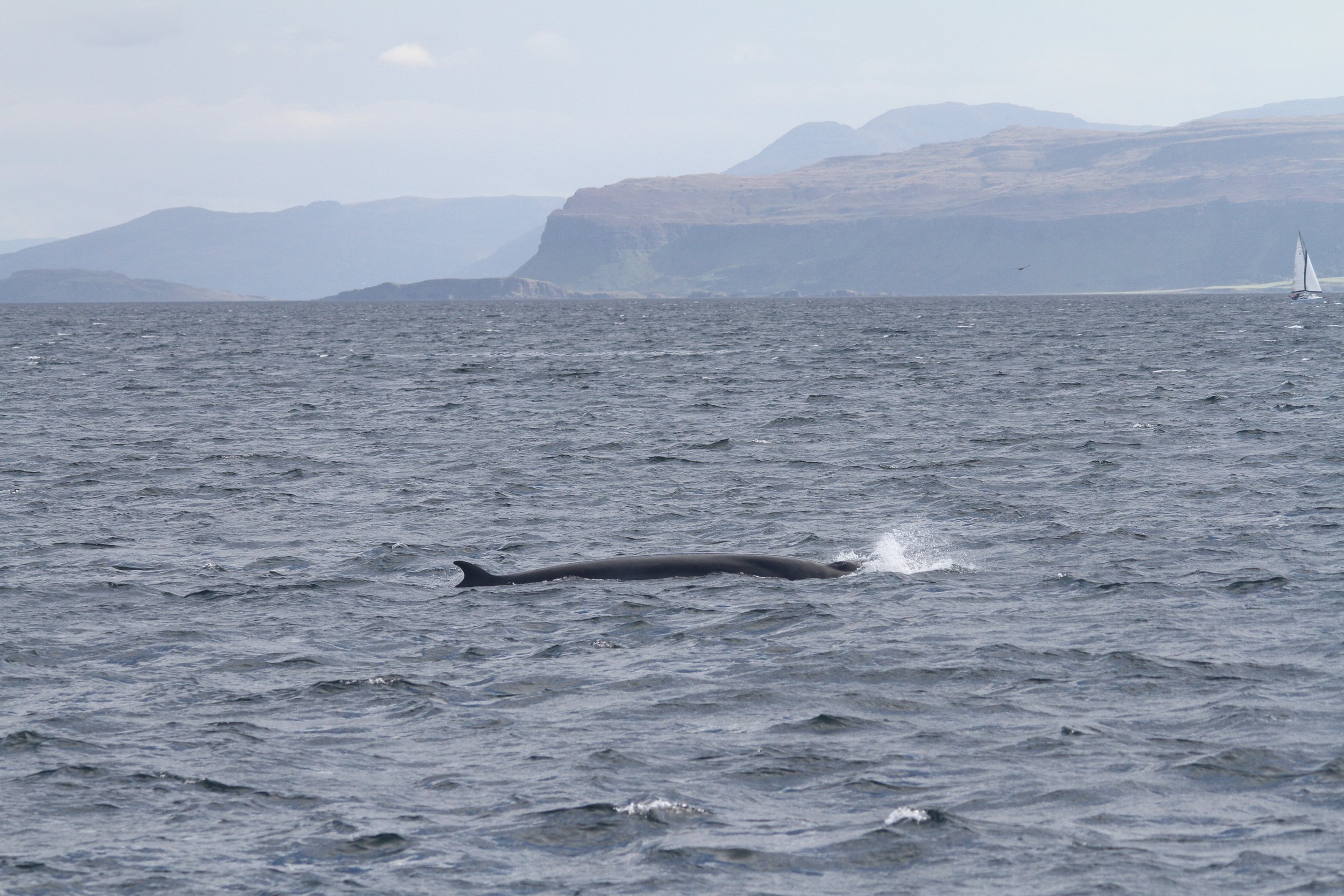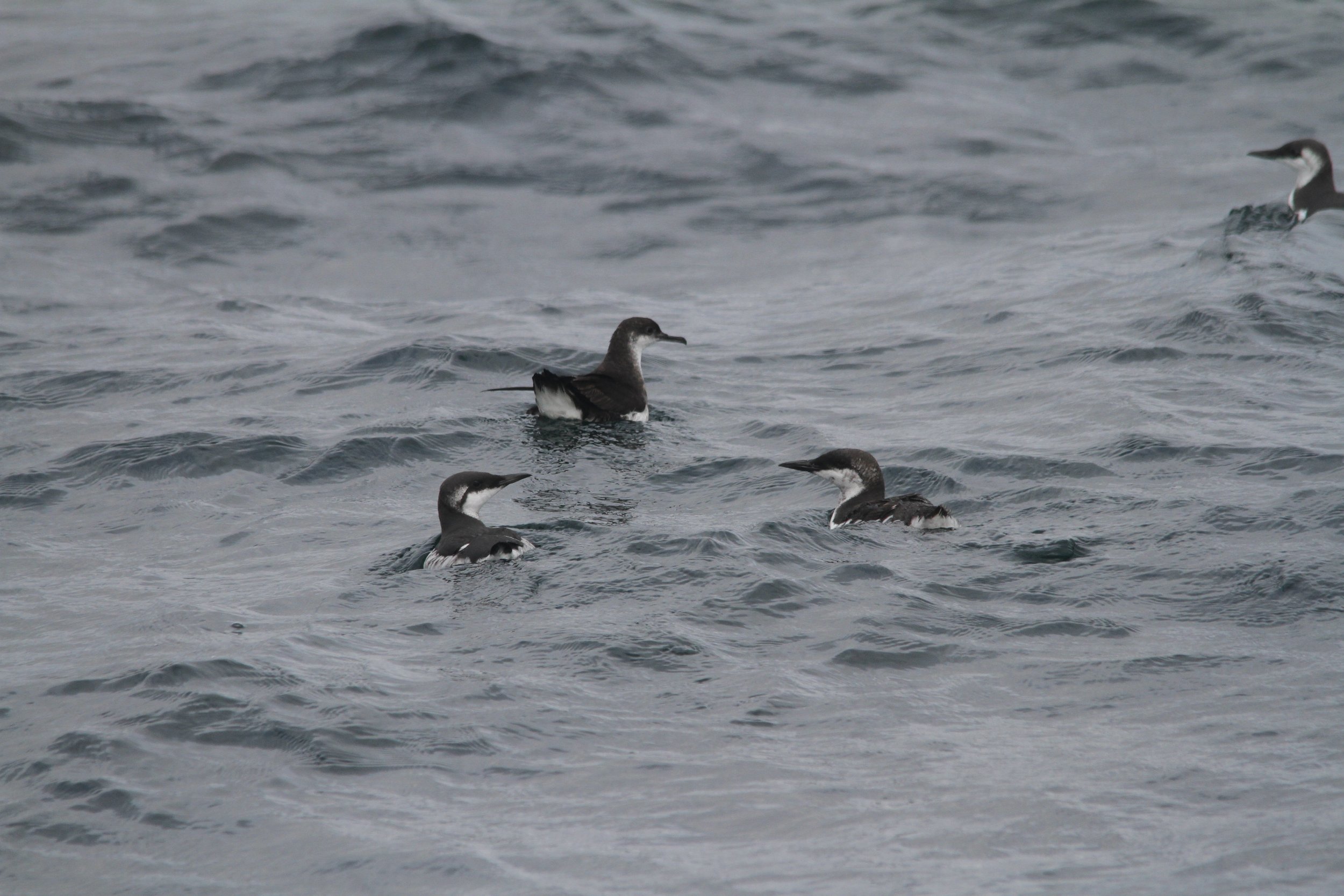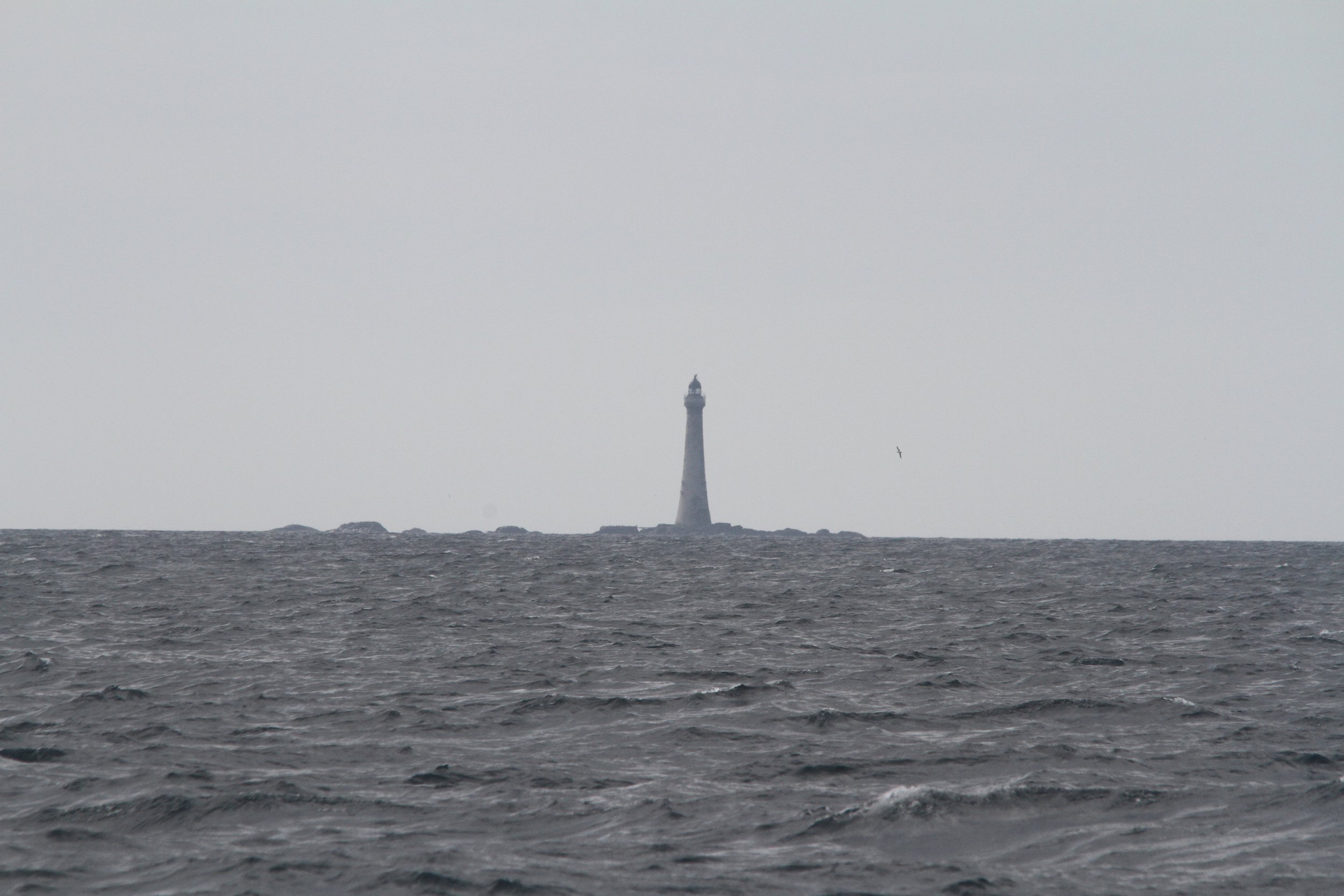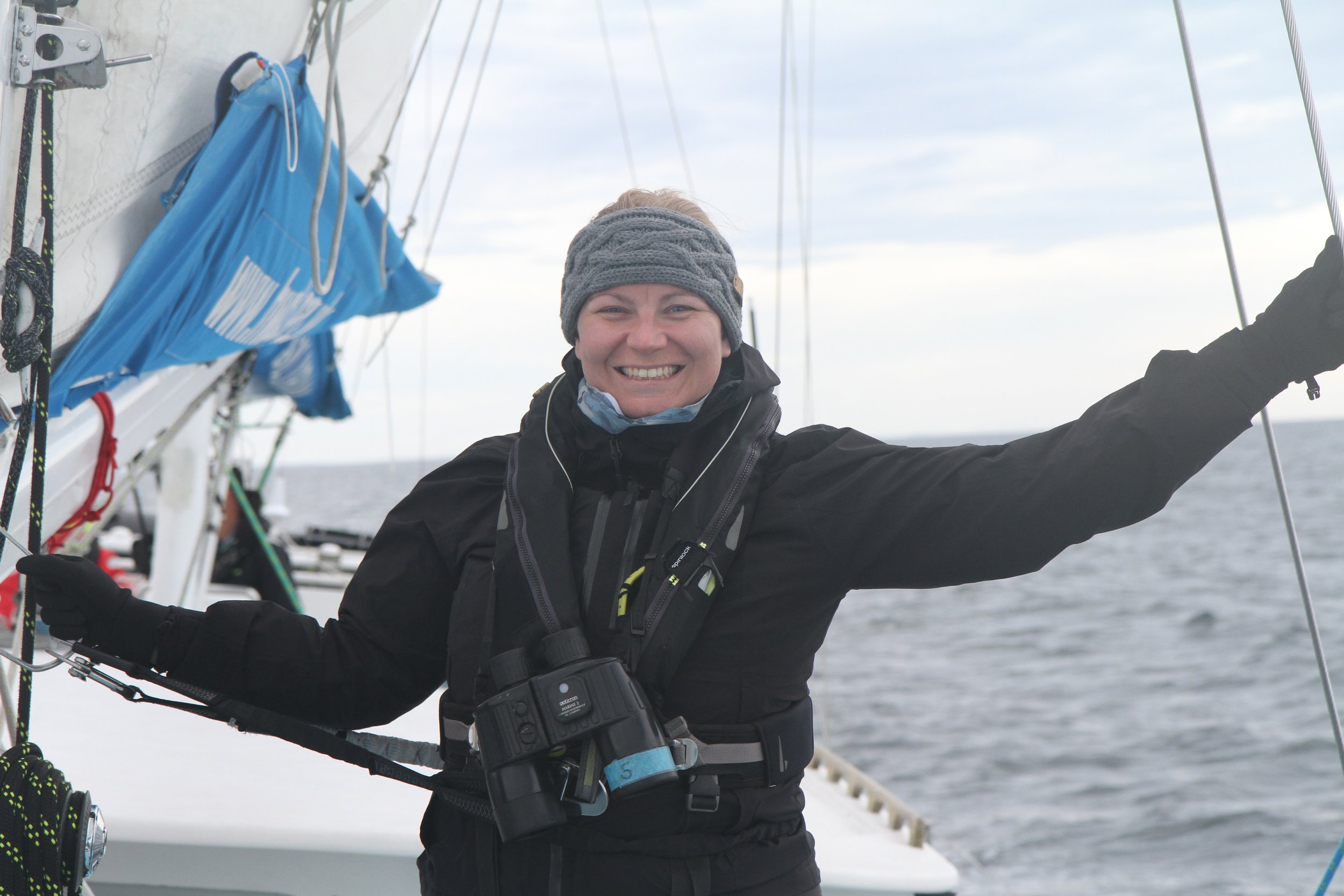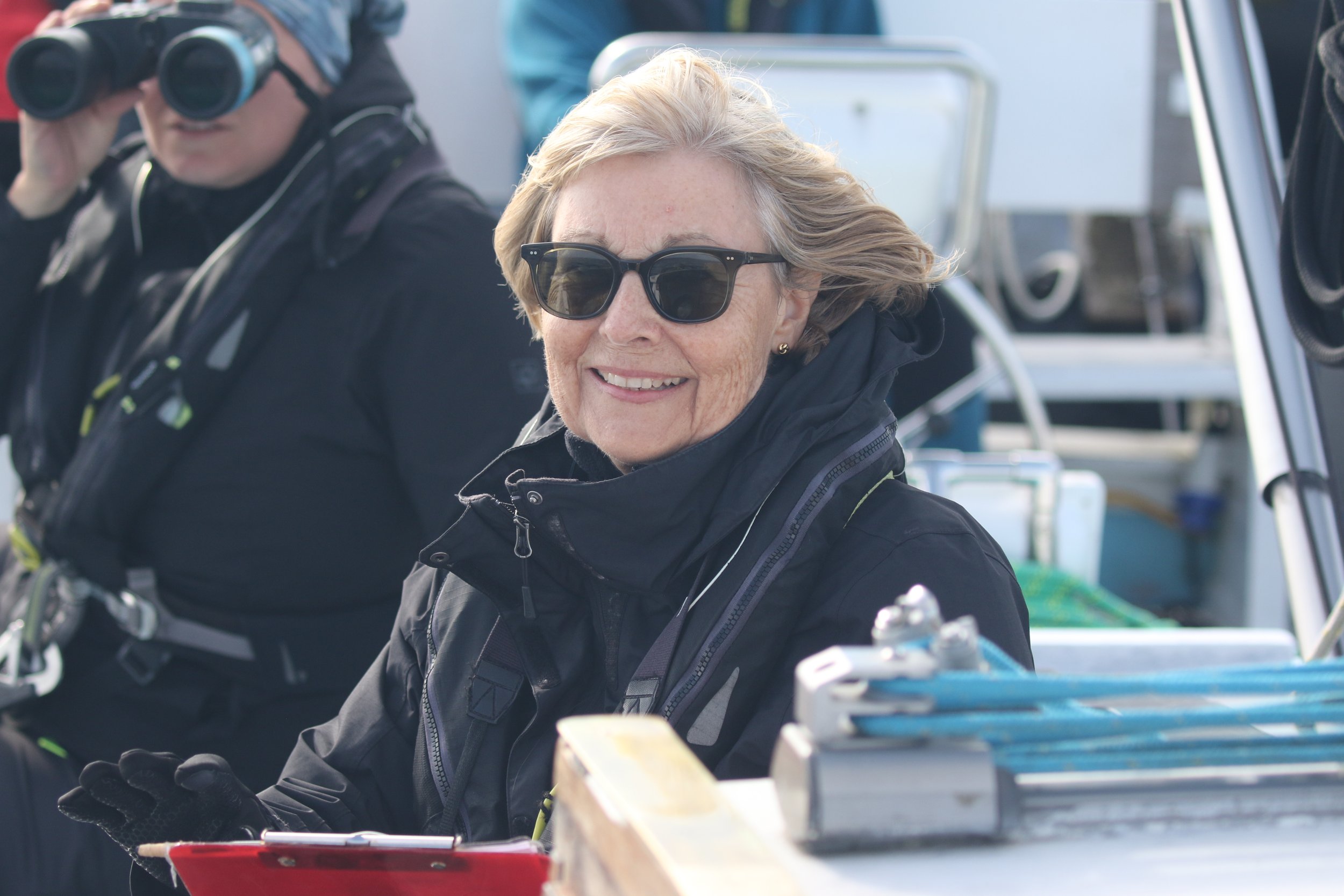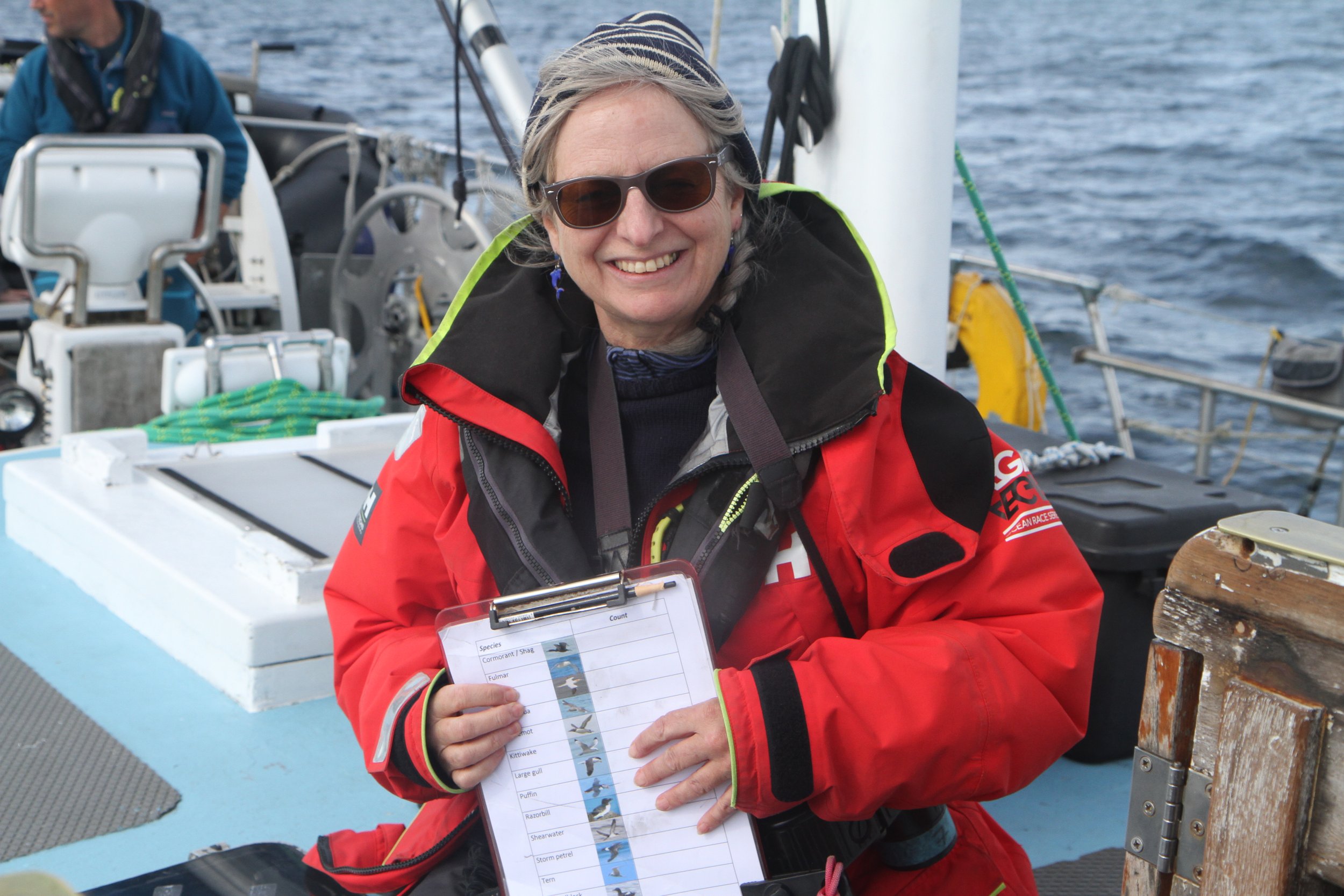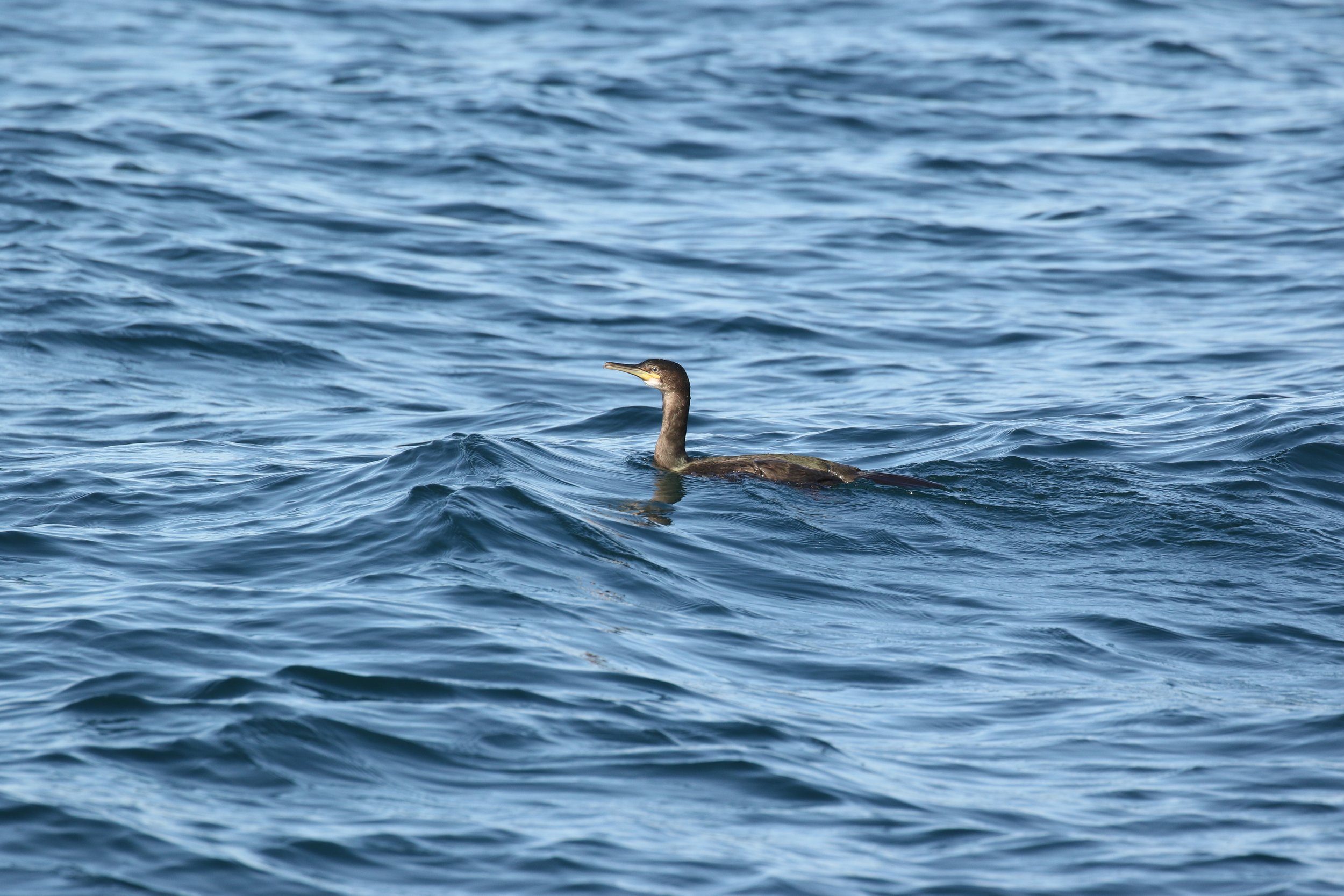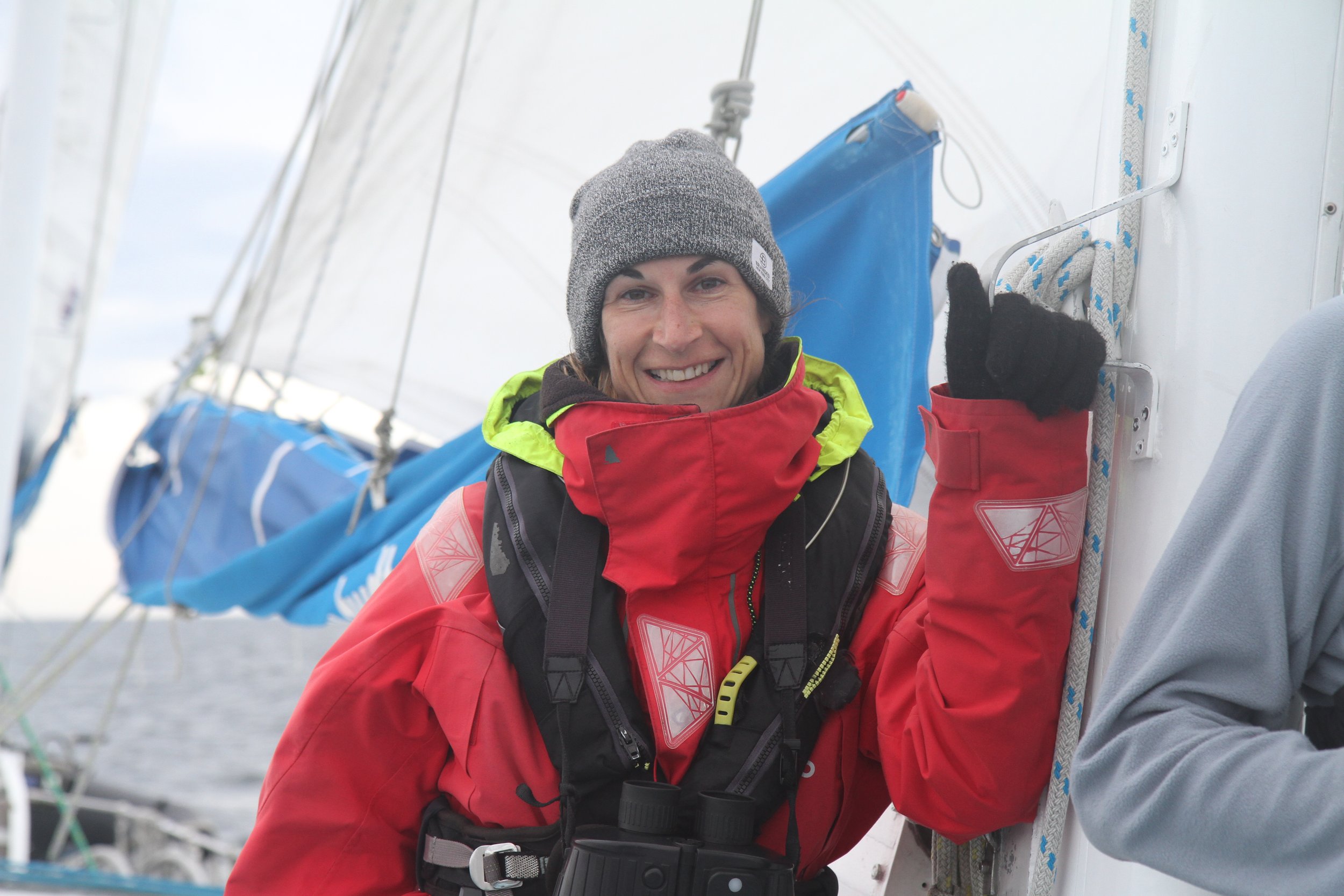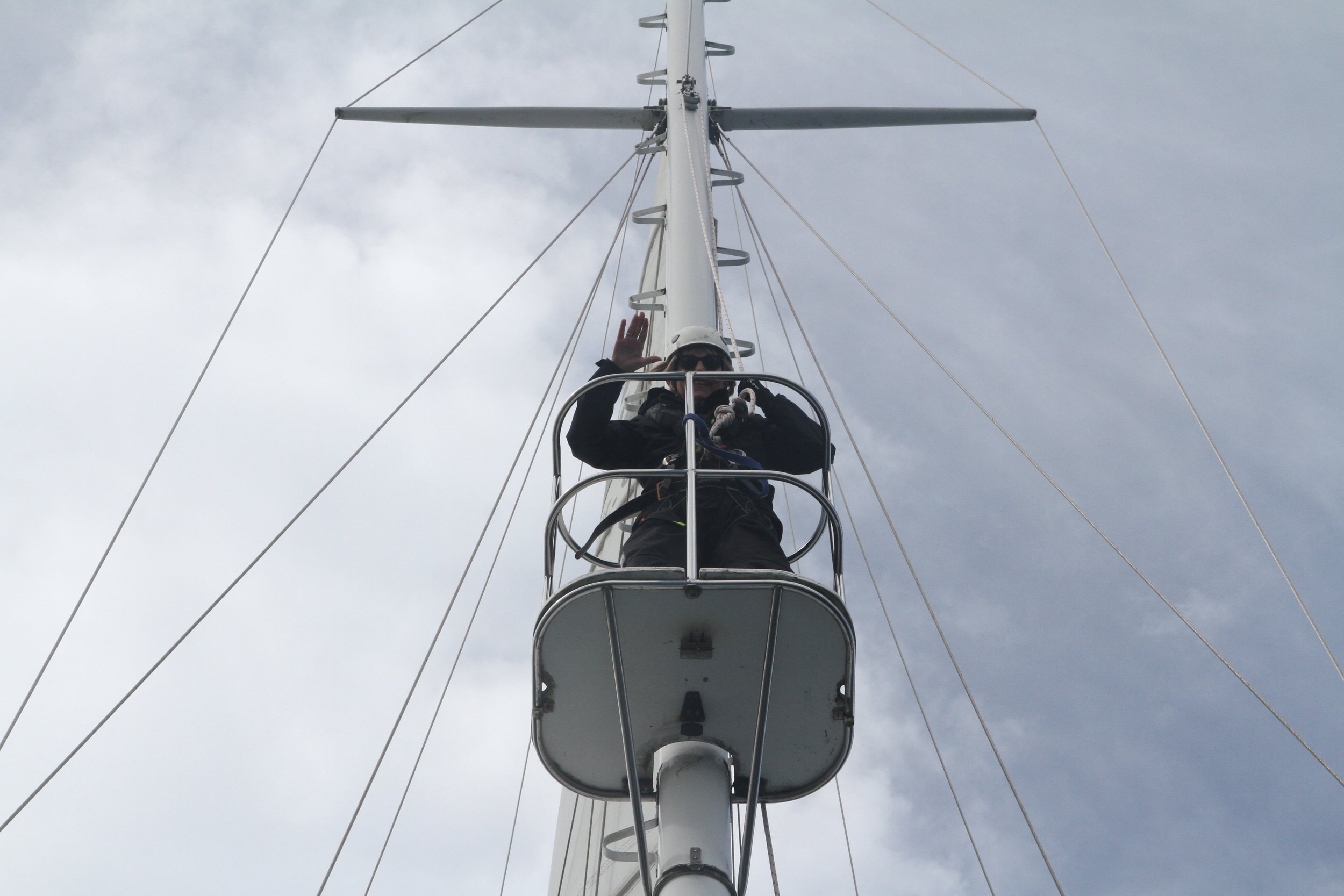John Coe and Aquarius encountered for second time this season during our fourteenth research expedition
OUR FOURTEENTH EXPEDITION OF 2022 LEFT TOBERMORY FOR A SEVEN-DAY SURVEY MONITORING HEBRIDEAN WATERS ONBOARD SILURIAN - OUR RESEARCH VESSEL. TREATED TO GREAT WEATHER AND FANTASTIC SIGHTINGS, CITIZEN SCIENTISTS ONBOARD ENCOUNTERED SEVEN DIFFERENT SPECIES OF MARINE MEGAFAUNA. HANNAH LIGHTLEY, SCIENCE OFFICER ONBOARD, TALKS ABOUT THE EXPEDITION…
DAY 1
Silurian welcomed aboard Kirstie, Lea, May, Nicky, Rosie and Iphthime – an all-female volunteer group for the 14th trip of the season. After finishing the safety briefings and science talks, the day started off a little wet, but everyone was eager to get out on the water as there had been sightings of John Coe and Aquarius - the last two remaining killer whales from the West Coast Community - off Ardnamurchan Point. As we set sail in an easterly wind, the clouds disappeared, and the sun shone through. Leaving Tobermory and heading towards Ardmore Bay, at first only creels were to be recorded but as we reached the end of our first transect, we had our first sighting – harbour porpoise!
As we approached Ardnamurchan Point the anticipation reached its peak, Hannah was anxiously receiving updates from the shore – but no sightings from Silurian. We continued our transect and then the shout of “SIGHTING” from Nicky on the mast. Sure enough, two huge dorsal fins appeared from the water on the port side – John Coe and Aquarius!! We were ‘with whale’ for about 40 minutes collecting visual and acoustic data with many more sightings of those two distinct dorsal fins, an unforgettable experience for everyone on board. As we headed towards our anchorage at Loch Cuan, we had no more sightings for the rest of the day but our luck at seeing ‘the boys’ on our first day was more than enough for us.
DAY 2
Following the excitement of the previous day, everyone woke up with a spring in their step wondering what the first sighting of the day would be; just as breakfast was served an otter was spotted leaping out of the water and scrambling onto the rocks behind! A good omen for the rest of the day. Once ‘on survey effort’ we sailed towards Coll and Tiree where our first cetacean of the day was spotted – a minke whale! We left the transect line to try and collect photos for identification, but this individual was being particularly sneaky surfacing in different directions at a distance from the boat.
We returned to the transect line and our first grey seal of the survey was encountered, followed shortly after by another minke whale. Those at the science station could here the whistles of dolphins through the hydrophone, while tantalisingly close, they were not to be seen. As the wind picked up, skipper Pippa and first mate Bruce were able to set all three of Silurian’s sails which was a fantastic sight. After lunch, a course change was made to head towards our anchorage for the evening, off Gometra. Things then started to get very exciting!
Volunteers on the mast spotted big splashes several 100 metres ahead, with lots of feeding bird activity. Suddenly, common dolphins were all around splashing, foraging, breaching and even bow-riding, with around 15 individuals coming to the boat for fun. In amongst all this crazy activity, two minke whales were spotted in the distance joining the feeding frenzy. Everyone onboard witnessed something special with around 50 common dolphins, 2 minke whales and 100’s of birds in a massive feeding frenzy – not something we often see on Silurian!
Rather sadly, we left the commotion behind and returned to gathering data on transect, aiming to reach our anchorage at a reasonable time. The sky turned a dreary dark grey and just before the heavens opened 4th crew Felix spotted a basking shark off the stern. A clear dorsal fin stayed a short while at the surface and then vanished – we couldn’t believe our luck! The day had been filled with incredible sightings - alongside whales, dolphins and sharks we spotted many birds including guillemots, razorbills, gannets, kittiwakes, shearwaters, shag-orants and even a great skua. Many wondered how we were going to follow the two incredible days already had.
DAY 3
The day started with one of our keen volunteers Iphthime spotting a white-tailed sea eagle from the deck way before breakfast was even on the table – a morning treat! Suited and booted in our red foul weather gear, we headed up on deck and after the ‘on effort’ drum roll, several harbour porpoises opened today’s sightings log.
Heading out of the bay, some common dolphins started their morning by racing towards Silurian, crossing the bow and then returning to ride the bow wave, ducking and diving around the boat. A group of gannets were dive bombing for food nearby like little jets, an incredible sight. We were then told to ‘ignore’ the growing crowd of common dolphins (thought to be around two hundred) as a whale fin had been spotted amongst the melee. Not one, not two but three minke whales were foraging amongst the crowd of dolphins and gannets with science officer Hannah and 4th crew Felix trying to get photos for ID of the individuals. This was another awesome encounter in roughly the same place as the day before, highlighting the importance of this habitat/area for marine mammals and seabirds.
After around 45 minutes of observing behaviour and taking images for photo ID, we headed back onto our transect. We headed west of Tiree towards Skerryvore over a reef-like area known to be productive for basking sharks, however, the sea state had picked up and sighting conditions had become quite difficult. Everyone did well with the new motion of the boat with some screams of delight coming from the mast. The lack of marine mammal sightings in the afternoon certainly didn’t dampen spirits as numerous birds including large numbers of Manx shearwaters, guillemots, even more gannets, fulmars, and a pair of puffins in their winter dress spurred the group on. We ended the day with a beautiful rainbow heading into the anchorage at Gott Bay accompanied by two sightings of harbour porpoises.
DAY 4
The morning started with only visual effort as Pippa and Bruce negotiated Silurian’s way through the shallow rocky passage and out of the bay into open water. Once in deeper water, the hydrophone was deployed and splashes were spotted on the horizon – our first sighting of the day – common dolphins, some of whom decided to entertain us with a morning display of bow riding.
As we headed towards Gunna Sound, several other pods of common dolphin continued to appear, as well as thousands of seabirds foraging as far as the eye could see. As we continued monitoring alone our transect, more and more common dolphins began to appear - with over 100 in the area and at one point around 40 dolphins were bow riding and travelling alongside the boat. In disbelief, all crew and volunteers were up on deck observing the spectacle, when suddenly a minke whale surfaced towards the stern of the boat. Before we knew it, we were in the middle of another feeding frenzy with minke whales surfacing in all directions. Hannah took charge of photographing animals from the mast ahead and Felix in charge of photographing animals that surfaced behind. The volunteers were split into two groups calling out sightings and surfaces of the minkes; even the first mate Bruce was called into action inputting sightings onto the computer.
Gannets continued to dive for over 30 minutes as well as common dolphins leaping, foraging, and travelling alongside Silurian. Minke whales were even seen lunge feeding, a first for many on board. As the action had no signs of stopping, we left slowly and let them continue with their morning. Finally, we made it to the entrance of Gunna Sound, known as shag city. May soon found out that the passage lives up to its reputation as numerous sightings of the bird needed to be recorded - a whopping 82 sightings in one half hour shift!
We headed out to more open sea and were treated to our first storm petrel sighting of the expedition as well as 11 bottling seals. We also had some very close sightings of several fulmars, a couple of bonxies and one harbour porpoise. In the final 30 minutes of the survey, with Ardnamurchan Lighthouse in view, we saw a lot of gannet feeding activity beneath the rocks and then several pods of common dolphins leaping in the distance. Getting closer to the boat, the final stretch of the expedition was surrounded by a fantastic display of breaching, leaping and general frolicking of common dolphins to end another great day.
DAY 5
Heading back around Ardnamurchan peninsula and towards the Sound of Mull we did not have the feeding frenzy experienced 3 days prior, instead some common dolphins were spotted in the distance. Passing Ardmore those on the mast had another tricky go at calling the creels on our way to Tobermory. Excitement was provided by Rosie, Iphtime and Felix scaling the mast up to the crow’s nest. An incredible view as the sky brightened. As we made our way back into Tobermory Bay, 4 grey seals were spotted before returning to the spectacular views of the multi-coloured town.
Across the 7 days of wild weather, the group surveyed 180nm miles of the Hebrides encountering 7 different species of marine megafauna with 70 separate sightings.
A big thank you to volunteers Iphthime, Rosie, May, Lea, Nicky and Kirstie as well as crew Pippa, Bruce Hannah and Felix. By joining us onboard you are aiding the conservation and protection of Scottish marine mammals and megafauna by collecting crucial visual and acoustic data.
Showing the track line of the area surveyed and sightings during HWDT 14.
THANKS ALSO TO NATURESCOT FOR SUPPORTING THE DATA COLLECTION ON BOARD SILURIAN.






